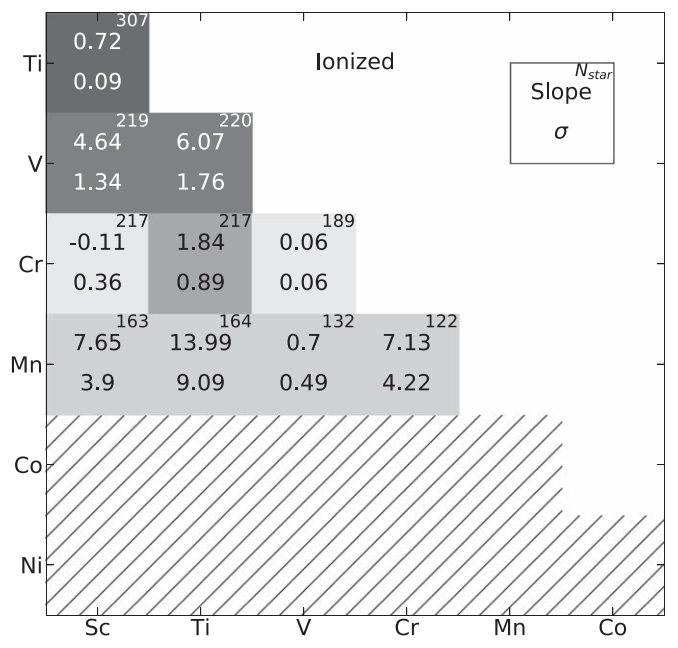Correlation in iron-peak elements production channels
Using improved atomic transition data, we rederived the vanadium abundances for 255 metal-poor stars.
Understanding the chemical composition of metal-poor stars in the Galactic halo is key to tracing the early chemical enrichment history of the universe. These stars provide clues about the nucleosynthesis processes responsible for creating many heavy elements. In particular, the iron-group elements, including scandium, titanium, and vanadium, are produced through core-collapse supernovae (CCSNe). However, current CCSNe models struggle to fully explain the observed abundance patterns in these stars, especially the correlations between scandium, titanium, and vanadium.
To address this, we used improved atomic transition data to rederive vanadium abundances for 255 metal-poor stars. Our results confirm previous findings that scandium, titanium, and vanadium are correlated in these stars. The increased number of vanadium lines analyzed provided greater confidence in these results, supporting the idea that these correlations arise from nucleosynthesis processes at early Galactic times.

The complex production history of scandium in CCSNe makes it difficult to understand how it is related to vanadium and titanium. It is possible to reproduce the overall iron-group element abundances by including a larger hypernova fraction and taking into account the effect of neutrino interactions and jets. Yet, it is still unclear how the current CCSNe models will impact the GCE calculations, and whether they can reproduce the correlations seen in observations. More theoretical works are needed to explain the correlations between scandium, titanium, and vanadium.